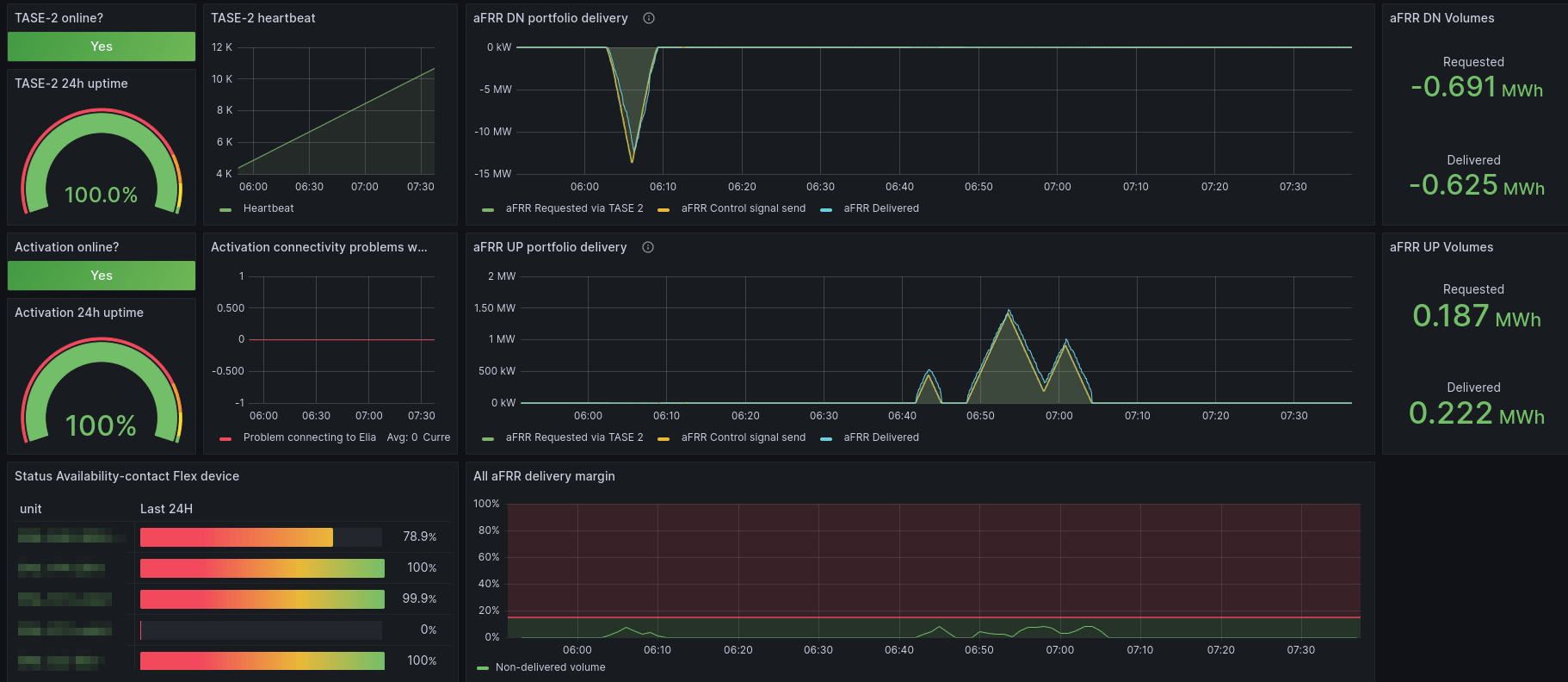
How Flexcity used Grafana Cloud to help balance the national power grid in France
Last winter, Flexcity — a market leader in electric flexibility — faced an unprecedented challenge: Help stabilize the French national power grid, in the midst of a widespread energy crisis that loomed over Europe.
As a byproduct of the Russian invasion of Ukraine, energy prices in the EU soared in 2022. And France, meanwhile, faced a nuclear power outage that winter that threatened to significantly disrupt its energy supply and increase the risk of electricity shortages.
“The atmosphere was really tense in France,” recalled Mathias Deshayes, CTO at Flexcity, which operates across several European countries, including France, Belgium, Italy and the Netherlands.
Ultimately, the French grid operator RTE tapped Flexcity to help balance the electricity supply and demand, and minimize the risk of shortages. And as the company made headlines for its efforts, Flexcity’s technical team credited Grafana Cloud for helping France get through that especially tough winter.
All about Flexcity and electric flexibility
Flexcity, which is a subsidiary of water management, waste management, and energy services company Veolia, specializes in what’s known as electric flexibility. They work with companies large and small to enable and monetize demand response, or the ability of an electrical device to adjust its power consumption based on overall electricity demand. For example, a device, such as a motor or heating unit, will decrease its consumption in response to an overall shortage of electricity on the grid, and increase its consumption in response to an excess of electricity on the grid. To learn more, visit Flexcity’s site.
According to Deshayes, Flexcity’s transition from a homegrown monitoring tool to Grafana OSS and then to Grafana Cloud played an integral role in helping to stabilize the power grid in France. Using Grafana dashboards, his team could track customers’ energy consumption metrics in real time — which, in turn, helped shave several GWh (Gigawatt hours) of electricity during the critical moments when the grid needed it the most.
“Our in-house monitoring system had reached its limits and would have been a source of stress during this particularly demanding winter,” Deshayes said. “We could have been blind to some of our customer portfolio.”
Deshayes recently sat down with Grafana Labs to talk about Flexcity’s Grafana journey and how, exactly, his team used Grafana Cloud to help keep the lights on in France.
*Mathias Deshayes, CTO at Flexcity* A headhost of Mathias Deshayes.](/media/blog/flexcity/mathias-deshayes-headshot_3.jpg)
Note: This interview has been edited for length and clarity.
Set the stage for us: What was it like for your team at Flexcity last winter?
Deshayes: So, we have the European energy crisis, but in France, we also had a nuclear plant outage. There was a public announcement from the French government that there was a high risk of energy shortages in France. So Flexcity was getting a lot of attention. Before this period even began, our upcoming role in maintaining grid stability was spotlighted through various Veolia communication channels, and the message was: “This winter, Flexcity will help the French national grid avoid grid interruptions.”
The electricity prices got really high, so there was a big financial risk for us. If we missed a request from the grid operator, the impact would’ve been enormous. The financial stakes were high, making our operations during that period critical for both us and the grid.
How exactly did Grafana help you through this challenge?
Deshayes: When we get a request from the grid operator, we use Grafana dashboards to see the energy and power consumption and production levels of our customer base in real time.
We install small boxes at our customer sites and every four seconds we have their consumption sent to our platform and displayed in Grafana. So we have the sum of our portfolio in Grafana, and we can follow along with consumption during an activation, which is when a grid operator requests that a device adjusts its power, up or down, to help balance the grid.
And if a box on the customer site stops working, we directly see that in Grafana. So if we see that the data stopped at some point, we’re able to call the client directly to ask them to reboot the box, for instance.

What prompted Flexcity’s move from Grafana OSS to Grafana Cloud? And how did it prepare you for that challenging winter?
Deshayes: The advantage of Grafana Cloud for us is that it’s fully managed, with security updates happening often and as soon as they’re needed. With the OSS version, we had to maintain the server and apply the updates.
We also started to share some dashboards with customers, and with Grafana Cloud, we can white-label them, so customers have a dashboard with their own brand on it. They can then follow what we do in real time with their assets.
One more important aspect is the single sign-on. The Google single sign-on that we use at Veolia is available on the cloud version. So, user management is really easy now.
We also discovered, after signing on with Grafana Cloud, that the support from Grafana is really amazing — really reactive and helpful. We have a dedicated customer support contact in Paris. We have a bi-weekly meeting with him, which is very helpful. We are now exploring how to use new features of Grafana Cloud, like alerting.
How do you feel about the upcoming winter?
Deshayes: Winter is always a special season for us. It’s always the season where we have the most activations. In the past, our homegrown monitoring system added an extra layer of complexity during demanding winter months. There is less stress, and more confidence overall, during activations now with Grafana.



